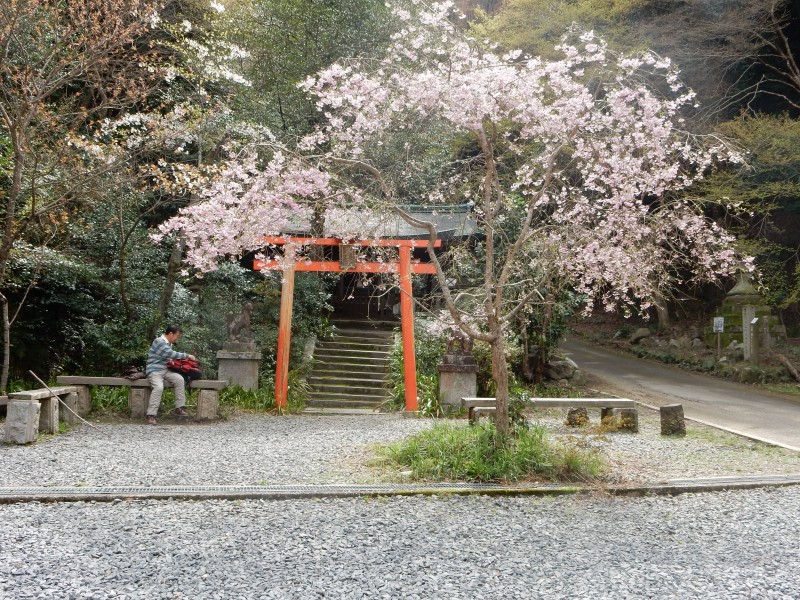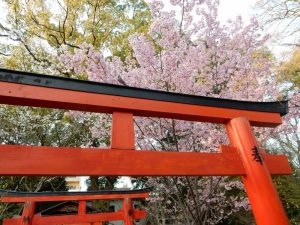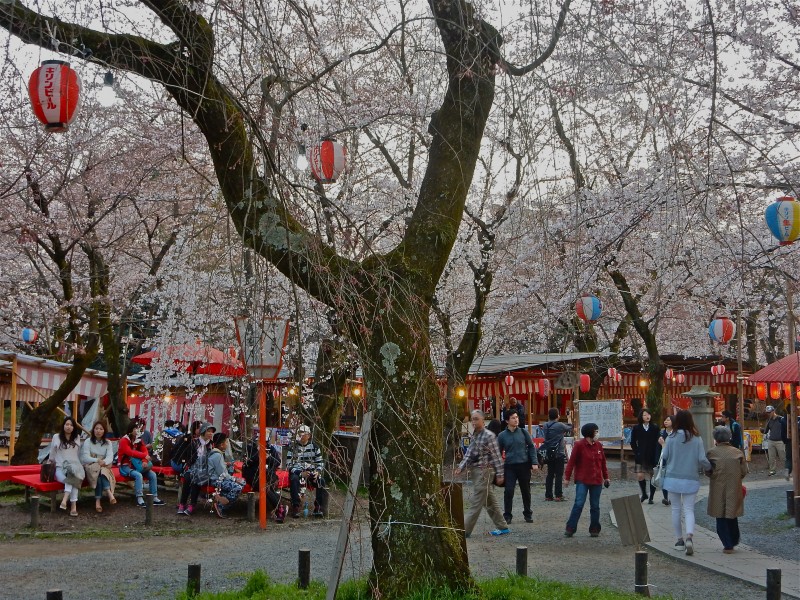 Hearn’s first shrine visit came in cherry blossom time in Yokohama, fresh after his arrival there by ship from Vancouver. It was in Hearn’s honeymoon period, when he was elated with being ‘in fairyland’ where everything was enchanting, elfish and curious. His writing conveys all the thrill of the new and exotic, when travellers ride a high of constant discovery.
Hearn’s first shrine visit came in cherry blossom time in Yokohama, fresh after his arrival there by ship from Vancouver. It was in Hearn’s honeymoon period, when he was elated with being ‘in fairyland’ where everything was enchanting, elfish and curious. His writing conveys all the thrill of the new and exotic, when travellers ride a high of constant discovery.
In a way Hearn had been prepared for Shinto by his attachment to the pagan polytheism of ancient Greece. While still a schoolboy he had turned away from what he saw as the oppressive monotheism of Christianity, and influenced no doubt by the Greek heritage of his idolised mother he had been enraptured by picture books of Greek myth. While in Japan, Hearn was to take on Christian missionaries as an enemy propagating an unattractive Western modernism. Whereas they ridiculed the worship of trees and snakes and rocks, Hearn had an instinctive understanding of how humans were intricately related to the environment around them.
At the time Hearn was writing there was no clear distinction as yet between (Buddhist) temple and (Shinto) shrine. The terms were sometimes used interchangeably. In the passage below Hearn had asked to visit another ‘temple’, but gets taken instead by his rickshaw man nicknamed Cha to a shrine.
There is a lofty flight of steps here also, and before them a structure which I know is both a gate and a symbol, imposing, yet in no manner resembling the great Buddhist gateway seen before. Astonishingly simple all the lines f it are: it has no carving, no coloring, no lettering upon it; yet it has a weird solemnity, an enigmatic beauty. It is a torii.
‘Miya,’ observes Cha. Not a tera this time, but a shrine of the gods of the more ancient faith of the land, – a miya.
I am standing before a Shinto symbol. I see for the fist time, out of a picture at least, a torii. How describe a torii to those who have never seen one looked at one even in a photograph or engraving? Two lofty columns, like gate pillars, supporting horizontally two cross-beams, the lower and the lighter beam having its ends fitted into the columns a little below their summits; the uppermost and larger beam supported upon the tops of the columns, and projecting well beyond them to right and left. That is a torii: the construction varying little in design, whether made of stone, wood or metal. But this description can give no correct idea of the appearance of a torii, of its majestic aspect, or its mystical suggestiveness as a gateway. The first time you see a noble one, you will imagine, perhaps, that you see the colossal model of some beautiful Chinese letter towering against the sky; for all the lines of the thing have the grace of an animated ideograph, – have the bold angles and curves of characters made with four sweeps of a master-brush.
Passing the torii I ascend a flight of perhaps one hundred stone steps, and find at their summit a second torii, from whose lower cross-beam hangs festooned the mystic shimenawa. It is in this case a hempen rope of perhaps two inches in diameter through its greater length, but tapering off at either end like a snake.
Sometimes the shimenawa is made of bronze, when the torii itself is of bronze; but according to tradition it should be made of straw, and most commonly is. For it represents the straw rope which the deity Funo-tama-no-mikoto stretched behind the Sun goddess, Heavenly-handstrength-god, had pulled her out, as is told in that ancient myth of Shinto which Professor Chamberlain has translated. And the shimenawa, in its commoner and simpler form, has pendent tufts of straw along its entire length, at regular intervals, because originally made, tradition declares, of grass pulled up by the roots which protruded from the twist of it.
Advancing beyond this torii, I find myself in a sort of park or pleasure-ground on the summit of the hill. There is a small temple on the right; it is all closed up; and I have read so much about the disappointing vacuity of Shinto temples that I do not regret the absence of its guardian. And I see before me what is infinitely more interesting – a grove of cherry trees covered with something unutterably beautiful, – a dazzling mist of snowy blossoms clinging like cloud-fleece about every branch and twig; and the ground beneath them, and the path before me, is white with the soft, thick, odorous snow of fallen petals.
Beyond this loveliness are flower-pots surrounding tiny shrines; and marvelous grotto-work, full of monsters, – dragons and mythologic beings chiseled in the rock; and miniature landscape work with tiny groves of dwarf trees and liliputian lakes, and microscopic brooks and bridges and cascades. Here, also, are swings for children. And here are belvederes perched on the verge of the hill, wherefrom the whole fair city, and the whole smooth bay speckled with fishing-sails no bigger than pin-heads, and far faint high promontories reaching into the sea, are all visible in one delicious view, – blue-penciled in a beauty of ghostly haze indescribable.



Thank you for this site and article, and the modern photos describing elements within Hearn’s writing.
After 8 visits to Japan and superficial attention to Shinto and its shrines, your site is helping get a deeper understanding.
During my next trip in April I will be better informed
Thank you for the input, Tony, and I hope you have a great trip. Please let us know of any revelations you may get about Shinto while you’re here…
” … a dazzling mist of snowy blossoms clinging like cloud-fleece about every branch and twig; and the ground beneath them, and the path before me, is white with the soft, thick, odorous snow of fallen petals.” Such descriptive writing! And in a day or so, in our unusually cold spring, our own cherry blossoms should fully appear here in Seattle. I am beginning v.2 of “Glimpses.”
Excellent! I’m happy to hear that you’re enjoying Hearn’s writing too. And being in Seattle, perhaps you’re familiar with the Tsubaki shrine there…
It’s so beautiful!
I’m planning a trip to Japan, can anyone of you recommend a good book in English that shows together temples and shrines (buddhist and shinto)? Thank you!
I’m afraid I’m not aware of any book with temples and shrines. Shinto Shrines by J. Cali is the best guide for Shinto aspects. I don’t know of any equivalent for Buddhist temples, I’m afraid…
Thank you very much!